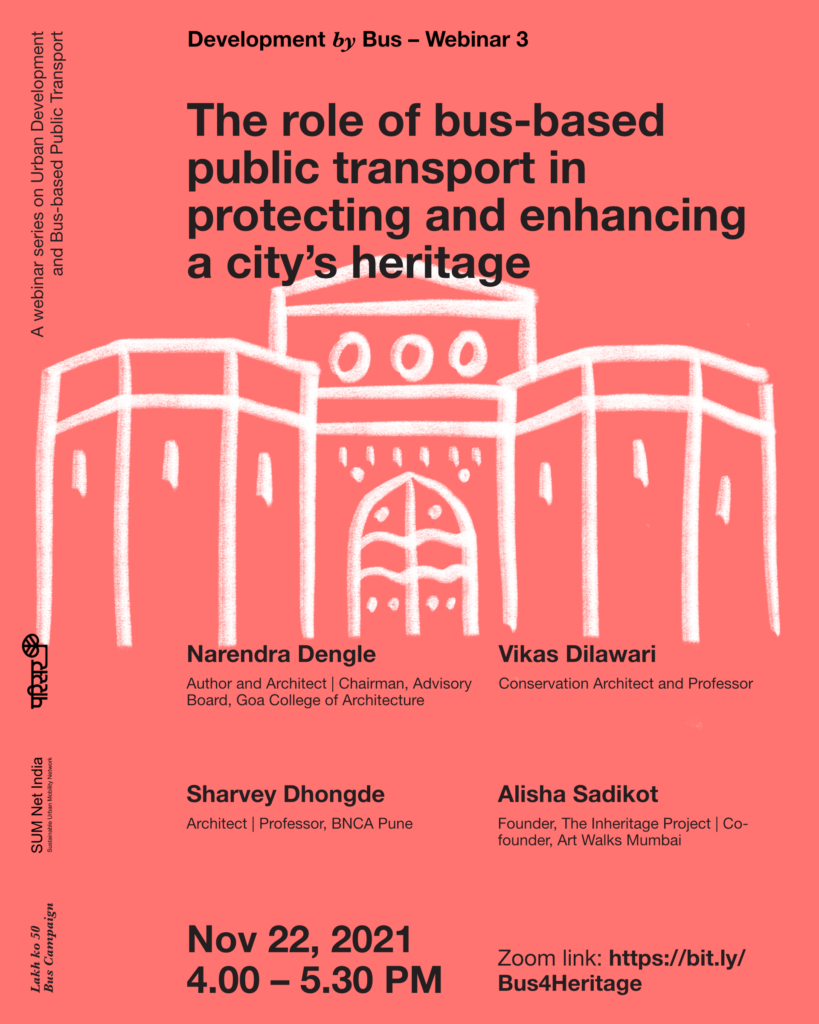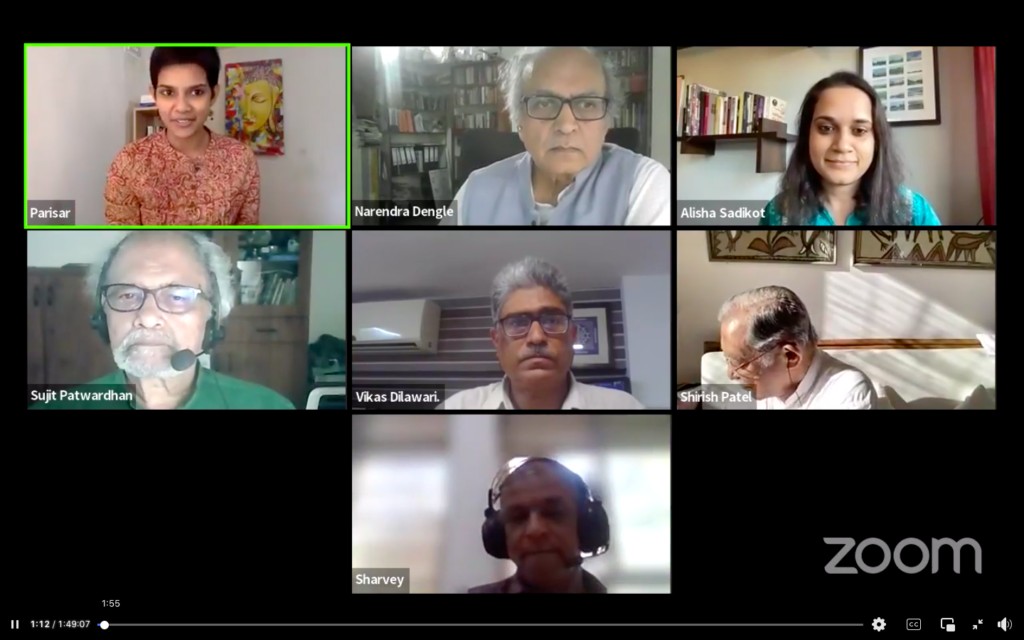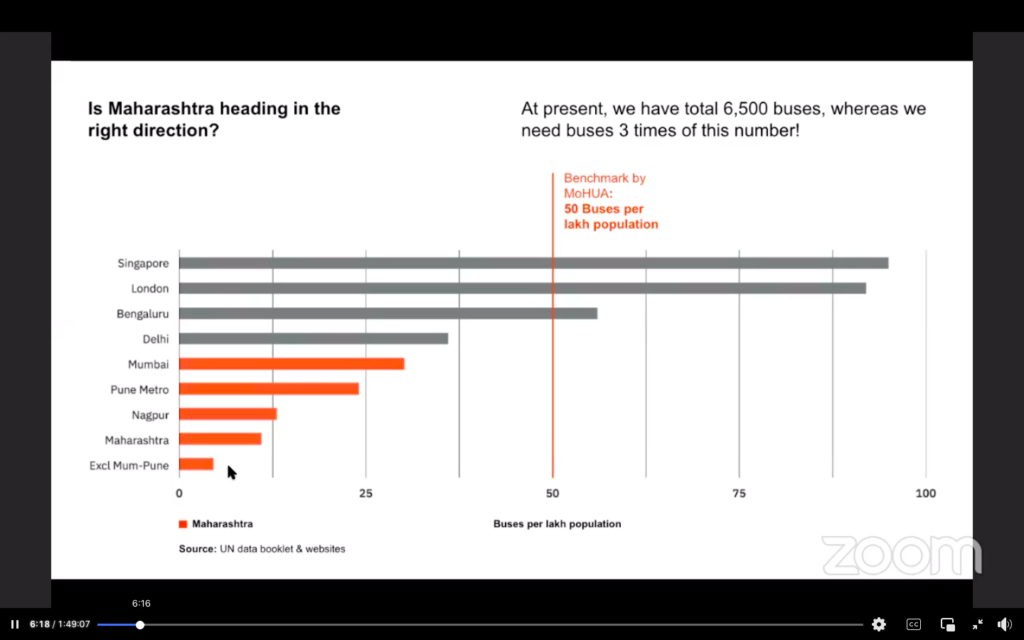The experts were speaking at a webinar organised by Parisar to explore if heritage can pave the way for development, and how a quality bus-based public transport can enable this. An integrated development plan with no-vehicle zones, networked bus transport system and parking charges to discourage vehicles were a few recommendations identified for the Urban Development Department, Government of Maharashtra.
The third in the ‘Development by Bus’ webinar series began with all the speakers unequivocally underlining the need to understand ‘heritage’ holistically in order to enable holistic solutions for its management and enhancement. While Sharvey Dhongde, Convenor INTACH Pune Chapter, said that the entire fabric of the city needs to be considered heritage, Narendra Dengle, author and architect, defined imaginative human responses at the interface of natural and built heritage as valuable practices of heritage. “Open spaces need to be declared infrastructural heritage”, added Dengle.
Award winning architect, Vikas Dilawari mentioned, “Heritage needs to be considered an asset which should be maintained and repaired, and not a liability, only then can a city capitalise on it.” Sujit Patwardhan, founder-member of Parisar added, “Heritage structures and precincts are seen as a drain on the exchequer rather than as unique features of a city that can boost business and commerce.”

The speakers also identified the threats to heritage that the current development paradigm poses. The lack of an integrated approach to planning was highlighted as one of the major threats. “The focus should be on the wholeness of cities as an organism rather than attempting to assemble together different parts as knee-jerk reactions”, said Narendra Dengle.
Sharvey Dhongde said “Development plans (DP) should recognise heritage as a non-renewable but reusable resource so that it can be managed and not just protected. Additionally, the DP and the Comprehensive Mobility Plan (CMP) for a city should go hand-in-hand.”
Alisha Sadikot highlighted the need for developing community consultation processes to identify priorities with urban development, transport and heritage. “The needs of people who live in the neighbourhoods where heritage sites are, or who commute to such places, must also be considered when planning the access to such sites.” Giving examples from Mumbai she demonstrated how heritage structures are completely obscured by flyovers which rather than improving access, impede it. “If heritage is seen as a resource for tourism, then provisions can be made to ensure that people’s experience of heritage starts not at the tourist spot but the moment they start their journey. And a well-networked public transit system which clearly advertises historic places can make this possible.” she added.

The speakers had a slew of recommendations for the Government. One was the need to improve pedestrian and public transport access along with measures to discourage personal vehicles. “Widening of roads and provision of free parking has proved detrimental to both the heritage and the urban fabric in which it exists. Parking charges, and experiments like vehicle-free zones need to be carried out to protect the city’s heritage and enhance its experience”, suggested Vikas Dilawari. Speakers also expressed that walking is a part of Indian heritage and pedestrianisation should accompany better public transport.
Parisar started the webinar with data that shows cities in Maharashtra have 4 buses per lakh population. Even the best case (Mumbai) has only 35 buses compared to Bangalore (60), far short of around 100 per lakh that cities like London and Singapore have. The number of private vehicles meanwhile has skyrocketed, putting pressure on heritage structures which come under the threat of road widening or marred by parking lots.

Swati Pathak, the campaign coordinator said, “Along with the set of recommendations identified in this webinar, Parisar will share a report on urban development and bus-based public transport to UD Minister Sh. Eknath Shinde, in the coming few months.”
The meeting was organized as part of a statewide campaign—Lakh ko 50—which highlights the necessity for at least 50 buses per lakh urban population (a benchmark set by the Ministry of Housing and Urban Affairs) for all cities of Maharashtra. It has been launched by the Sustainable Urban Mobility Network (SUM Net), a coalition of individuals, voluntary organizations, and civil society networks and movements promoting sustainable urban transport solutions across India.
Find the press coverage of the webinar here. You can watch the full recording of the webinar here.